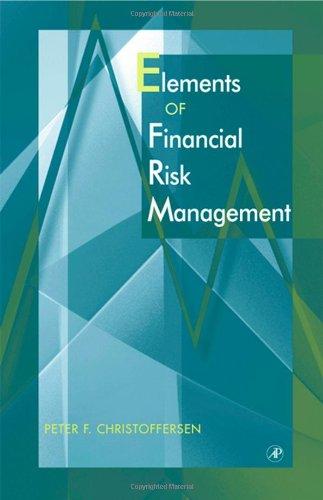5. Run a regression using the range instead of the squared returns as proxies for observed variancethat
Question:
5. Run a regression using the range instead of the squared returns as proxies for observed variance—that is, regress 1
4 ln(2)
D2 t+1
= b0 + b1σ2 t+1
+ et+1 Is the constant term significantly different from zero? Is the coefficient on the forecast significantly different from one? What is the fit of the regression as measured by the R2? Compare your answer with the R2 from question 4.
Fantastic news! We've Found the answer you've been seeking!
Step by Step Answer:
Related Book For 

Elements Of Financial Risk Management
ISBN: 9780121742324
1st Edition
Authors: Peter F. Christoffersen
Question Posted:





